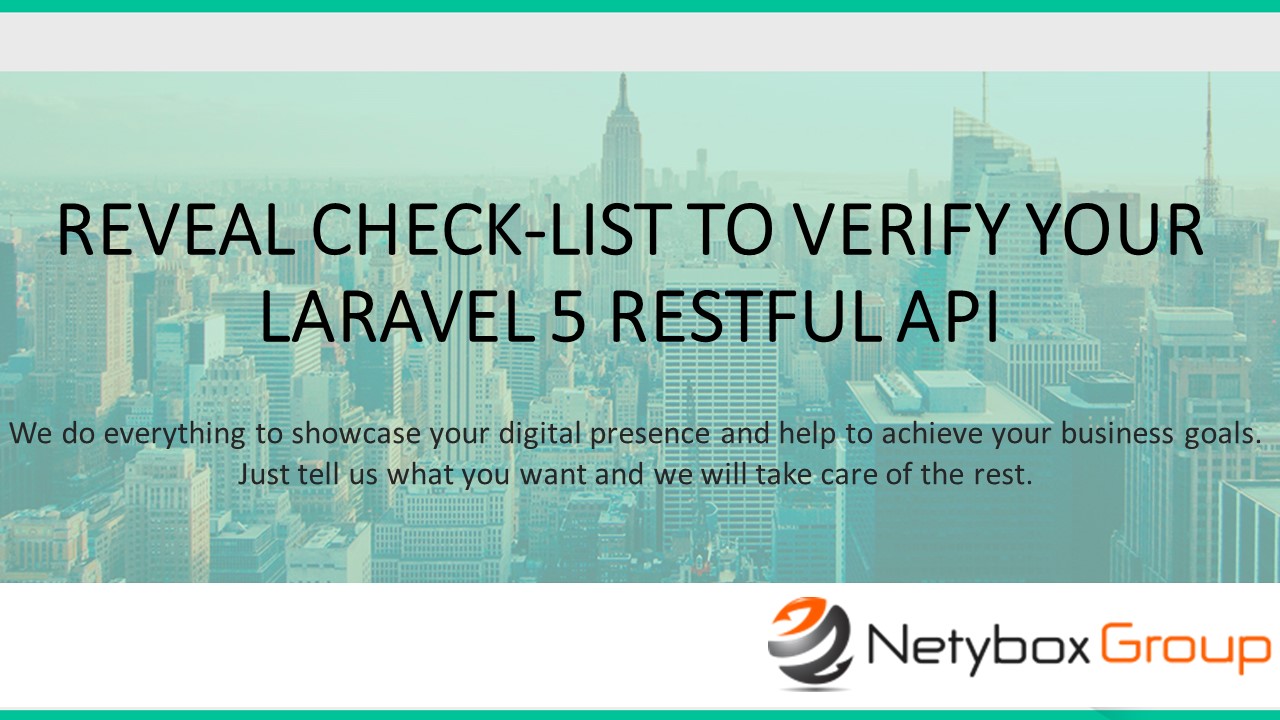Reveal Check-List to verify your Laravel 5 Restful API
Laravel figures in the set of most utilized open source PHP web frameworks in the world now. Laravel has got a big community of designers under its spell. Almost all prominent web developing companies ensure the services of professional Laravel developers in their core team of application development. Developing a Restful API using Laravel is not a very tiresome task, but the process demands a certain amount of care which should be used by developers at the time of development to evade crucial imperfections at the runtime. This particular article furnishes a detailed check-list to avoid errors while creating a Relaxing API with Laravel.
Basic steps to follow before we start-off
Imagine you are working on a local windows environment, then as a basic step you need to ensure that XAMPP and composer during installation properly, and it helps in the running of Apache and MySQL immediately. Along with XAMPP, tools such as Sublime-Text and useful plugins should be installed for increasing the pace of your development. Generate your own repositories with the aid of reliable sources such as Github. Should you be utilizing a Linux platform, these basic steps differ.
Make components and framework of your API error-free
First thing you should ensure while creating API is that all models are described effectively with no missing relations that link them one another. Vital factor which helps your components and framework work well is the functioning of related tables in the repository, so to avoid problems exploit relative functions in PHP artisan. Check laravel seeders are inserting data automatically in the data source without the errors. REST routes created with artisan commands play a substantial role in the working of API, hence make sure it does not have any error possibilities. Maintain only essential methods that control your entire API framework.
Be sure system CRUD methods
CRUD methods include functions you need to implement all API functions. All indexes, Marker controllers, and nested functions need to be checked as a 3rd step. It helps your resource controllers produce the desired results you want to display. All the issues generate with CSRF middleware must be set, either by disabling it at the moment, or fully. Markers should be included in the database with proper definitions, and request remotes must validate data correctly. Examine if PUT and PATCH methods are getting requests from the update methods you have created. Assure that a ruin method to delete unwanted data from the database has been created having no flaw in it.
Check the security aspects
Your current restful Laravel API should be top class in conditions of security, for that verify all methods you have developed like storing, and deleting by implementing auth as well as middleware. Analyse it code by code to pick out the problems. Some professional Laravel designers working in reputed businesses create CSRF to hack their own API to avoid every security weakness. Together with it some developers even create independent handlers for processing instant requests as well as superfluous errors. For making your restful Laravel API work extremely well very aspects need to be cross checked in a proficient line.










